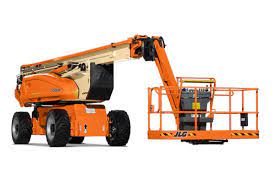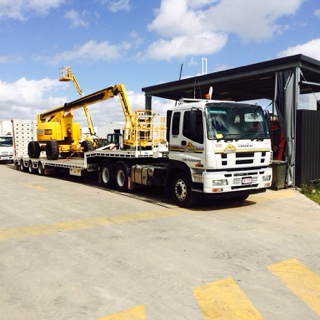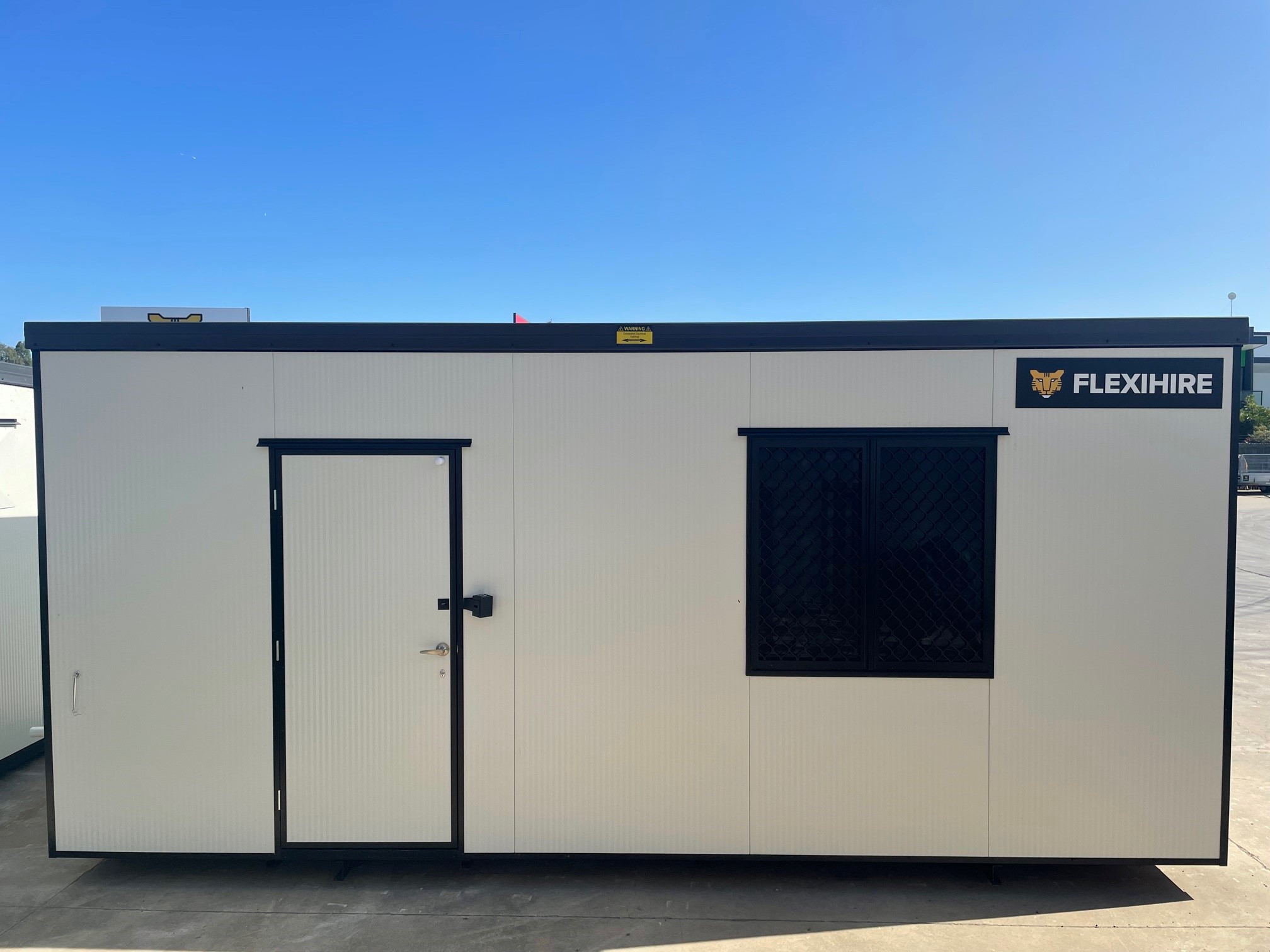Title Page
-
Plant Number
-
Make
-
Model Number
-
Serial Number
-
Date of Manufacture
-
Date of Inspection
-
Date of Commissioning
-
Date of Next Major Inspection
-
Prepared by
-
Location
Details
-
Design Registration Number
Take Five
-
Stop, Step Back and Observe
-
Think Through the Task
-
Identify the Hazard/s
-
Control the Hazard/s and Communicate
-
Complete Task Safely
Pre-Inspection Evaluation
-
Contact OEM and request an Email confirming the Machine has no outstanding Upgrades, add photo of email to the notes.
-
Inspect Machine for any Damage, Take Photos of Damage and add all findings in the notes
-
Check the the unit for Corrosion if any is present it shall be no deeper than 1/10th the thickness of the parent metal
-
Check Machine for Tyre Condition, reject the tyre if any damage is larger than<br>25mm square, tread is lower than 1 mm and cuts deeper than 5 mm. and add<br>Notes
-
Check Scissor Stack Bushes for Excessive Movement and add Notes
-
Check Machines Hydraulic Cylinders and Hoses for Condition and leaks this is<br>required to be Zero, add findings to Notes
-
After Completing the Pre-Inspection Evaluation Process Discuss issues with the Responsible Person for Authorization Before Proceeding with the Major Inspection, Responsible Person to Add Notes for repaired to be carried out or to be Scheduled at a Later Date.
-
Responsible Person to Sign Name and Position to Proceed with Major Inspection
Function Test
Function Test
-
Function Test Machine, add lift and drive speeds from the manufactures specification sheet and testing results and add Notes
-
Function Test all Safety Systems and Identify any Issues, take photos of<br>Pothole testing , add to Notes
Batteries
-
Check Machines Batteries for load Test, Overall Condition and add Notes
-
Check The Batteries Specific Gravity and add the Readings to the Notes
-
Check battery Charger Operation and add Reading to Notes
Overload test, Appendix 1
-
Findings
-
The Elevating Work Platform can Operate Smoothly for all Motions whilst Carrying the Rated load at the Manufactures Rated Speeds; add Notes and rated load used.
Creep Test
-
Creep Test to be Conducted with 125% of the Rated load
-
Raise the Machine to Full Height , Cylinder should not creep more than 25mm in a 30min Period, Record Results on Test Report with the rated load amount and add a photo.
-
Check and Reset the Hydraulic Pressures, add the Main Relief and lift relief Specification and test results to the Notes
Brake Testing
-
Brake should Hold on any Gradient it can Climb, to be Conducted with 125% of<br>Rated Capacity. There should be 0% Creep over a 10 minute Period on 10<br>Degree slope; add the gradient the unit was tested on and enter into Notes an<br>a photo
-
Check Braking Distance as per Manufactures Specifications, Add the<br>Specification i.e. high speed drive stopping distance 1.5 meters and add to<br>the notes.
Major Component Inspection
1. General
-
1.1 Verification of Serial Number
-
1.2 Completion of Manufactures safety upgrades
-
1.3 Modification to the latest standard (as far as reasonably practicable)
-
1.4 Manuals
-
1.5 Manufacturer specification plates (including rated capacity, slope<br>and wind).
-
1.6 Logbooks
2. Safety Items
-
2.1 Operating decal, installed and legible
-
2.1.1 General operating Instructions
-
2.1.2 Emergency operating instructions
-
2.2 Emergency retrieval system operates correctly
-
2.3 Safety interlocks
-
2.3.1 Stabilizer interlock
-
2.3.2 Boom Interlocks
-
2.3.3 Motion Interlocks
-
2.4 Hazard warning fitted as applicable
3. Indicators / Alarms
-
3.1 Level indicators / alarms functions correctly
-
3.2 Load indicators / limiters function correctly (if fitted)
-
3.3 Hour meter operational
-
3.4 Motion alarm
-
3.5 Other
4. Controls
-
4.1 Lower controls return to off and correctly labeled
-
4.2 Lower controls isolate upper controls
-
4.3 Upper controls return to off and are correctly labeled
-
4.4 Stabilizer controls (if fitted)
-
4.5 Emergency controls
-
4.6 Emergency stop/dead-man functions correctly
-
4.7 Other
5. Function Speeds
-
5.1 Functions operate correctly
-
5.2 Function Speeds set to specifications
-
5.3 Platform leveling system operates correctly
6. Hydraulics
-
6.1 All hydraulic hoses in serviceable condition and routed correctly
-
6.2 System relief valves set to specification
-
6.3 Load holding valves operate correctly
-
6.4 Accumulators inspected in accordance with AS/NZS3788
-
6.5 Hydraulic cylinders in serviceable condition
7. Electrical
-
7.1 Electrical looms adequately installed and protected
-
7.2 Electrical switches secured and operational
-
7.3 Work lights function correctly (if fitted)
-
7.4 Rotating beacons operate correctly
8. Mechanical condition
-
8.1 Chains ropes adequately installed and protected and tensioned
-
8.2 Sprockets/sheaves guarded as necessary
-
8.3 Braking systems operational and hold load
-
8.4 Pivot points adequately lubricated, secured and no excessive clearance
-
8.5 Slew bearing condition within tolerance
-
8.6 Slew drive condition satisfactory
-
8.7 Slew lock fitted and operational
-
8.8 Counterweights secured
-
8.9 Guarding adequate
- Satisfactory
- Unsatisfactory
- N/A
-
8.10 Wear pads within tolerance
9. Structural
-
9.1 structurally free from deformation
-
9.2 Critical areas free of cracks
-
9.3 Corrosion absent and surface condition protected
-
9.4 Platform condition and guardrails adequate
-
9.5 Platform gates self closing and latching
-
9.6 Platform floor condition adequate
-
9.7 Travel rests satisfactory (boom type MEWP)
-
9.8 Personal access adequate and slip resistant
11. Additional Requirements for Self - propelled MEWP
-
11.1 Drive brakes hold MEWP on rated gradient
-
11.2 Drive wheels axles and tyres adequate condition and correct specification
-
11.3 Wheel nuts correctly torqued
-
11.4 Extendable or oscillating axles function correctly
-
11.5 Slope alarm operates correctly
-
11.6 Motion alarms operate correctly (if fitted)
-
11.7 Audible warning device operational
-
11.8 Engine, fuel and exhaust system appropriately guarded sealed and serviceable
-
11.9 Batteries adequately secured with correct specification
-
11.10 Onboard battery charger secured and adequately isolated from chassis
-
11.11 Safety prop installed, labelled and functional (scissor type MEWP)
-
11.12 Condition of lifting eyes and tie-down points adequate
-
11.13 Harness anchor points satisfactory (boom type MEWP)
Machine Major parts Removal Section
Machine Major Parts Removal Section
-
Remove Extension Deck Assembly - Inspect for cracks, roller condition, Rails,<br>Harness Points, Platform Straightness, Repair and Send Extenshion Deck and Rails for Sand and Paint
-
Remove Platform Deck Rails and Gate , Inspect for Cracks and Condition of<br>Harness Points, Repair and Send for Paint
-
Inspect Platform for Cracks, Worn Platform Slides and Sound Mounting<br>points, Repair any Faults
-
Inspect Platform Control Box for Switch Condition, harness Plug Condition,<br>Control Box Guarding Fitted, Replace Decals if Required
-
Raise Machine onto One Level of Hard Wood Timbers Allowing Maximum Stability and Operation of the Pothole<br>System
-
Test and Inspect Pothole System for Operation and Wear, Repair or Replace<br>Worn Components if Required Fit New Switch Contacts
-
Inspect Safety Brace for Cracks and Mounting Bolts for Condition and<br>Tightness, Raise platform and Lower onto Brace for Cylinder Inspection and<br>Removal
-
Replace Worn Scissor Stack Bushes if Required
-
Inspect Main Wiring Harness for Routing, Damage and General Condition, If<br>Harness is Damaged or had a Previous Repair Check with the Responsible<br>Person for Authorizing a Replacement Part
-
Remove Lift Cylinder if Required send for Re-sealing , Cap Cylinder and<br>Hoses, Complete Visual Inspect of all Mounting Points and Cylinder Pins and<br>locking Hardware
-
Inspect Steering Components for Wear and Check all locking Hardware is in<br>Good Condition
-
Inspect Steering Cylinder for Leaks, Check Mounting Points for Cracks, Pin<br>Condition and Locking Hardware is in good Condition, Repair or Re-Seal if<br>Required
-
Remove Batteries and Rejuvenate with C-Tec Charger
-
Remove all Wheels and Inspect for Cracking and General Condition, Check<br>Wheel Nut or Bolt Condition and Replace if Required
-
Remove the Wheel Hubs and Inspect for Worn Key ways cracks, Worn Wheel<br>Stud Threads and General Condition
-
Inspect the Drive Motors for Leaks and Condition, Mounting Bolts are in Good<br>Condition, Then Remove Drive Motors leaving the Hoses Connected
-
Inspect Brake Assemblies for leaks and Re-Tension Mounting Bolts, Check<br>Hydraulic Hose Tension
Non Destructive Testing
-
Remove Paint and Complete Eddy Current and Visual Non-Destructive Testing<br>to Cylinder Mounting Points and scissor stack bosses and welds add Photo<br>evidence
-
Remove Paint and Complete Eddy Current and Visual Non-Destructive Testing<br>to Steering shafts and weldments, add Photo Evidence
-
Clean Area and Complete Mag Particle Non-Destructive Testing on Drive<br>Motor Shafts and add Photo Evidence
-
Clean Area and Complete Mag Particle Non-Destructive Testing on Brake<br>Shafts and add Photo Evidence
-
Repair any Cracks Found and Retest area, add Photo of Completed Non-Destructive Testing Certificate to the<br>Declaration
-
Inspect all Electrical Components in Lower Control System for Corrosion,<br>Terminal Tightness, Loose Wiring, Switch Condition, legiable Decal
-
Inspect Hydraulic Block for leaks, Tighten all Hydraulic Plugs, Hoses and<br>Valves, Inspect Coils for Corrosion and tight Terminals
-
Inspect Scissor Stack Wear Pads/Blocks for Serviceability and Replace if<br>Required
Component Replacement
-
Re-Seal lift Cylinder and Refit to Machine
- Lift Cylinder Re-sealed
- Lift Cylinder Re-seal Required
- Lift Cylinder Re-seal Not Required
-
Descale Battery Compartment apply Corrosion Inhibitor and Re-Paint
-
Re-install Batteries and Fit New Battery Cables and/or Terminal Clamps if Required
-
Refit Wheel Hubs
-
Refit Wheel and Tyre Assemblies
-
Lower Machine to the Ground and Torque Axle Nuts, Wheel nuts to Manufacturers Specification - Install New Split Pin<br>and add Sentry Seal to all Torqued Nuts and Bolts, Add Specification Used to this Entry
-
Axle Nuts and Wheel Nuts to Manufacturers Specification
-
Replace Any/All Retaining Hardware as Required
Appearance and Re-Assembly
Appearance and Re-Assembly
-
Repaint Unit in Manufacturers Colors - including all Areas Affected During Non-Destructive Testing
-
Replace all Company Branding Decals
-
Replace all Safety Decals
-
Apply Non-Slip Tape to Platform Floor as Necessary
-
Install Reconditioned Electric Motor Assembly if Amperage is Above Manufactures Normal Readings
-
Fit New Yellow Pouch
Compliance
-
EWP log book replaced and correctly filled out
-
EWP grey card replaced and correctly filled out
-
Add Details to Compliance Plate and Take Photo
-
Test and tag decal installed and correctly dated
Complete Annual Inspection using the Electronic Service Job
-
Enter Annual Inspection Electronic Service Job Number
Final Inspection and Quality Assurance
-
Spare parts used
-
Service notes
-
Technicians Time Allocation (hours)
-
Toolbox items
-
Take 5 pre-hire photos
-
Service Technician to Sign Full Name That This Major Inspection has Been Completed and Tested as per OEM Specifications and in Accordance with all Relevant Sections of AS/NZ 2550.10 2006 &1418.10
-
Responsible Person to Sign Full Name That This Major Inspection has Been Completed and Tested as per OEM Specifications and in Accordance with all Relevant Sections of A.S.1418
Major Inspection Final Sign Off to confirm Certification
-
Branch
-
Date Completed
-
Qualifications of Inspector
-
I hereby Certify that the Equipment in this Inspection Report has Been Inspected and Tested by me and is in a Safe and Satisfactory Structural and Mechanical Condition and Complies with the Relevant sections of AS2550.10 2006 and AS1418.
Declaration by Inspecting Organisation
Declaration by Inspecting Organisation
-
I hereby Certify that the Mobile Elevating Work Platform Identified above has been Inspected in Accordance with the requirements of AS2550.10 and has been found to be in a safe and Serviceable Condition at the Time of the Inspection
-
Inspecting Organisation
-
Company ABN
-
Date
-
Authorized Representative Full name and Sign
The Following Inspection and Test Reports have<br>been provided and Form Part of the Major<br>Inspection Requirements
Examination of Structural, Mechanical Components
-
Full examination of all Structural and Mechanical components. All items passed inspection.
Non Destructive Testing of Critical Structural Mechanical Components
-
Completed and passed NDT inspection. Certificate supplied
Function Test
-
Full Function Test Completed and Passed
Load Test
-
Load Test Completed and Passed
Creep Test Hydraulic Cylinder
-
Creep Test Completed and Passed
Brake Test
-
Brake Test Completed and Passed
A list of major components that were replaced and major repairs undertaken on this MEWP is attached in the following sheets.
DECLARATION BY OWNER
-
I acknowledge receipt of this major inspection documentation. I further state that I have correctly represented the prior and anticipated future use of this MEWP to the inspecting organisation and have specified the necessary upgrades and modifications necessary to ensure that risks associated with its use (including maintenance and repair) are minimized as far as reasonably practicable.
-
Owner Authorised Representative
List of Significant Repairs
List of Significant Components Replaced
-
List Components Replaced i.e. Steer Axle, Slew Bolts, Scissor Stack
Appendix
-
Add media








